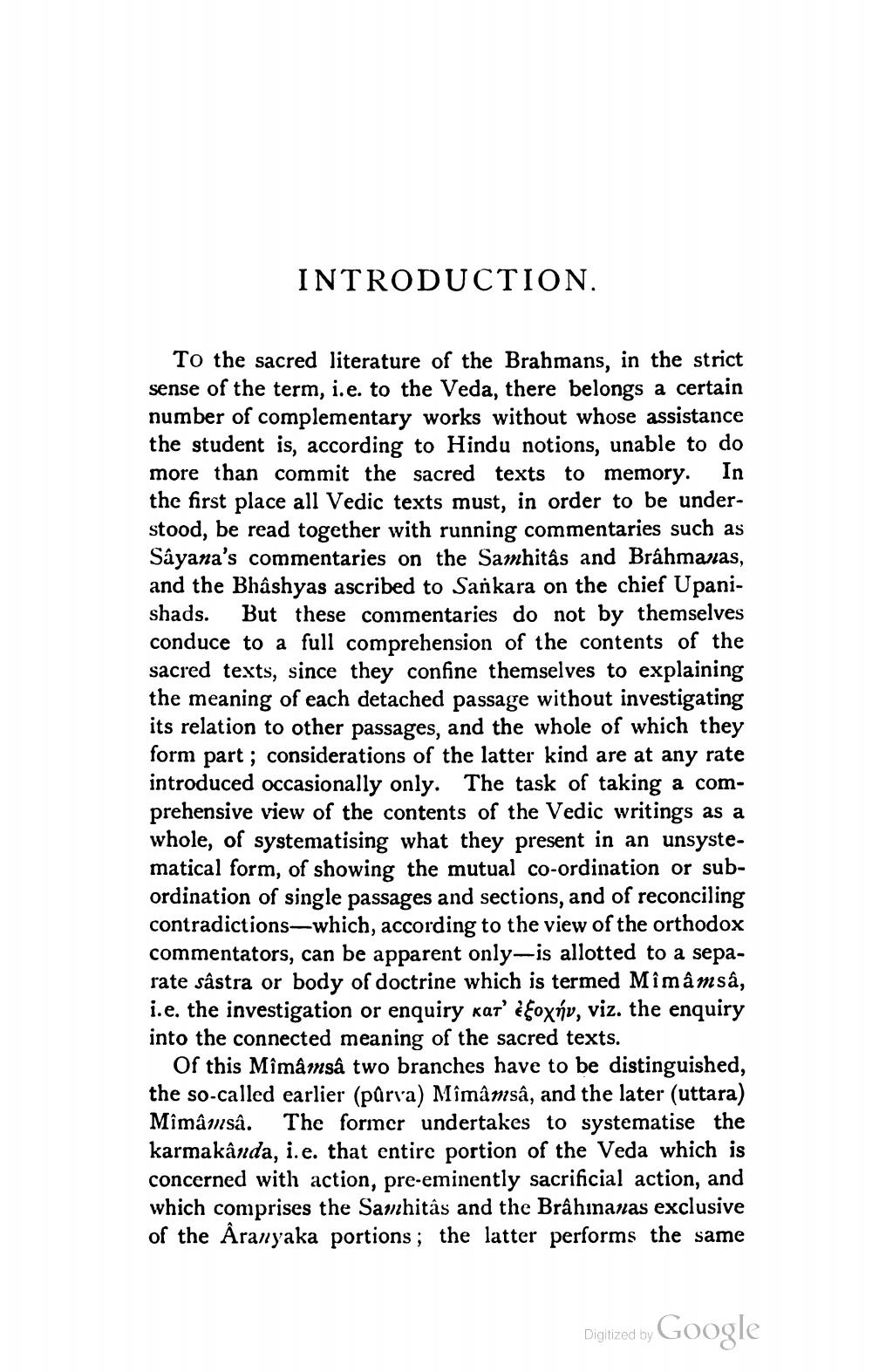________________
INTRODUCTION.
To the sacred literature of the Brahmans, in the strict sense of the term, i.e. to the Veda, there belongs a certain number of complementary works without whose assistance the student is, according to Hindu notions, unable to do more than commit the sacred texts to memory. In the first place all Vedic texts must, in order to be understood, be read together with running commentaries such as Sayana's commentaries on the Samhitâs and Brahmanas, and the Bhashyas ascribed to Sankara on the chief Upanishads. But these commentaries do not by themselves conduce to a full comprehension of the contents of the sacred texts, since they confine themselves to explaining the meaning of each detached passage without investigating its relation to other passages, and the whole of which they form part; considerations of the latter kind are at any rate introduced occasionally only. The task of taking a comprehensive view of the contents of the Vedic writings as a whole, of systematising what they present in an unsystematical form, of showing the mutual co-ordination or subordination of single passages and sections, and of reconciling contradictions—which, according to the view of the orthodox commentators, can be apparent only-is allotted to a separate sâstra or body of doctrine which is termed Mîmâmsa, i.e. the investigation or enquiry kar' Eoxýv, viz. the enquiry into the connected meaning of the sacred texts.
Of this Mîmâmsâ two branches have to be distinguished, the so-called earlier (pûrva) Mîmâmsâ, and the later (uttara) Mîmâmsâ. The former undertakes to systematise the karmakânda, i.e. that entire portion of the Veda which is concerned with action, pre-eminently sacrificial action, and which comprises the Samhitâs and the Brâhınanas exclusive of the Aranyaka portions; the latter performs the same
Digitized by Google




